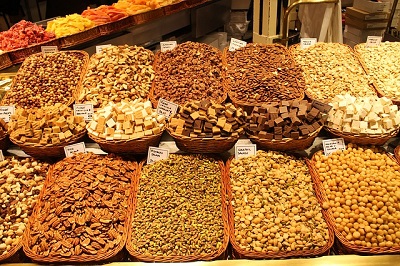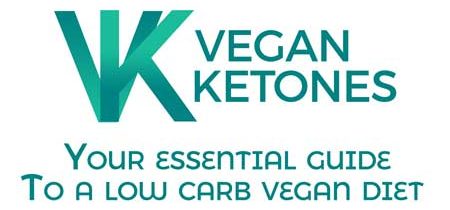This Keto Glossary is where you’ll find the most commonly used terms in a low-carb ketogenic diet.This keto glossary is not a comprehensive list, contact us if you need more words added.
Ketogenic Diet
Ketogenic diet means a high-fat, low carbohydrate diet with moderate protein intake. The ketogenic diet causes ketones to be produced by the liver. This changes the body’s metabolism.
The bodies default setting for fuel is glucose. A ketogenic state means the body uses fat for energy. This is both the fat content eaten and the layers of stored fat. There are many variations of a ketogenic diet.
Ketoacidosis
Diabetic ketoacidosis is another word for ketoacidosis. Ketoacidosis is a potentially lethal state of high blood glucose, high blood ketone levels, and low blood pH.
Those most at risk from ketoacidosis are diabetics and people who are alcohol dependent. Not to be confused with the benign state of nutritional ketosis. This is a healthy state of low blood glucose and blood ketones between 0.5 to 3.0
Ketosis (Nutritional)
Ketosis is defined by Volek and Phinney in their best-selling book “The Art and Science of Low-Carbohydrate Living” as defined by blood ketones ranging from 0.5 to 3.0 mM.
This is achieved through a significant reduction of carbohydrate foods intake. Typically to less than 50 grams per day.
The body and brain make a fundamental transition from the reliance of glycogen (from carbohydrate) as its main source of energy.
Because it’s not getting carbohydrates as fuel it is forced to use fat (in the form of fatty acids and ketones) as its main source of energy.
Keto Flu
Keto flu is caused when you suddenly cut carbohydrates. First and foremost it is usually experienced when starting a ketogenic diet (less than 50grams of carbs daily).
This is your bodies reaction to carbohydrate starvation as the body transitions to burning fat for fuel. Replenishing electrolytes is a good way of avoiding this and take food supplements where needed.
Carbohydrate
Your diet is made up of three macronutrients, carbohydrates, protein, and fat. Carbohydrates can be found in most of the foods you eat including
- fruits
- vegetables
- grains
- beans
- legumes
- milk and milk products
- foods containing added sugar
Starch, sugar, and fiber, for example, are carbohydrates. Carbohydrates provide you with most of your energy. They are converted into blood glucose or blood sugar by your body to be used for energy.
In a keto diet, the net carbs are what is counted, which is the total amount of carbs, minus the fiber.
Net Carbs
Net carbs are the digestible dietary carbohydrate left after you minus fiber and sugar alcohols (such as maltitol, xylitol, erythritol).
Fat Adapted
When your body easily derives most of its calories from fat and a very low amount of carbs, it is called fat adapted. At this stage, your body can easily switch between carbohydrate and fat as its main fuel source.
Diet
Diet is the name for types of food that a person, animal, or community eats habitually, for example, “Keto diet”
Insulin
Is released by the pancreas when we eat carbohydrates. It moves the glucose from our bloodstream into our cells to be used as fuel.
The body goes into storage mode when insulin levels are elevated, not just storing carbohydrates, but fat too.
This means that elevated levels of insulin turn off the ability of the body to burn fat and is typically why insulin resistant people are overweight.
Glycogen
Glycogen is the name for stored glucose in the body. When blood glucose levels drop suddenly the body needs a readily available supply of energy. Then it uses the glycogen stored in the muscles and kidneys.
Ketones
Ketone bodies, also known as ketones are produced by the liver. These are used peripherally as an energy source when glucose is not readily available. There are two main ketone bodies:
- Acetoacetate (AcAc)
- Beta-hydroxybutyrate (BHB)
Acetone is the third and least abundant ketone and is a by-product of the breakdown of the two main ketone bodies.
Electrolytes
Major electrolytes found within the body include calcium, magnesium, potassium, sodium, phosphate, and chloride.
The body uses electrolytes for many different functions. In the initial stages of a ketogenic diet, your electrolytes may be low.
To avoid unpleasant side effects such as dizziness and weakness, it’s vital to pay attention to your electrolyte intake. Just remember to check the carbohydrate content of your electrolyte solution. Most are high in sugars such as fructose and glucose.
Fat Bombs
Fat bombs are a pleasant way of getting good fats into your body. They are also excellent for staving off hunger pangs.
Lipolysis
Lipolysis is a process involved in the breakdown of fats. It converts triglycerides into glycerol and free fatty acids. The longer you fast, the more of these free fatty acids will be released.
Why is this important?
Well, fatty acids are used by the liver to create small amounts of ketone bodies and used as fuel.
Lipolysis cannot happen if you eat a significant amount of glucose.
The beauty of a vegan ketone diet is 80% – 90% of The food you consume will be fats. The high-fat content means you don’t have to worry about excess protein or carbs being converted into glucose.
Macronutrients
Macronutrients are the foods we eat which provide the bulk of our calories (energy). The three main categories are carbohydrates, fat, and protein.
Micronutrient
Micronutrients are substances required in trace amounts for the normal growth and development of living organisms. Magnesium, potassium, calcium, and zinc are examples of micronutrients.
Metabolism
Metabolism describes the organic and chemical processes inside organisms that are needed to maintain life, or how quickly you burn calories or fat.
- The chemical processes that keep you alive are an example of metabolism.
- The rate at which you burn fat and calories is an example of metabolism.
Glucose
Glucose is a simple sugar which is an energy source for living organisms and a component of many carbohydrates.
Sugar Alcohol
Sugar alcohols come from plant products such as fruits and berries. The carbohydrate in these plant products is altered through a chemical process.
These typically have a minimal impact on insulin and blood glucose levels. They are used as sweeteners and examples include sorbitol, mannitol, xylitol.
If you have any words that don’t appear here in the keto glossary please feel free to contact us.

